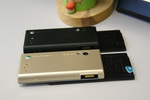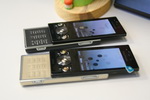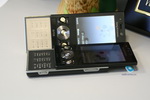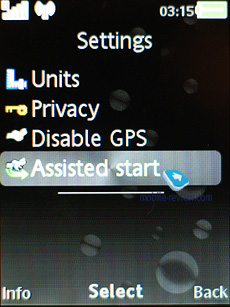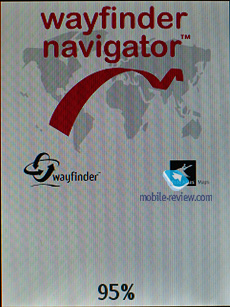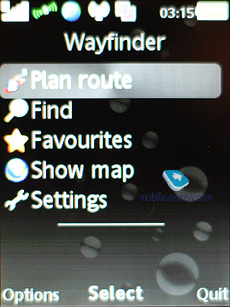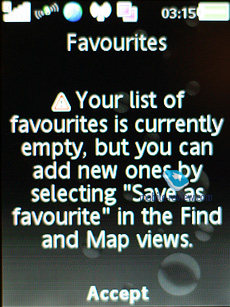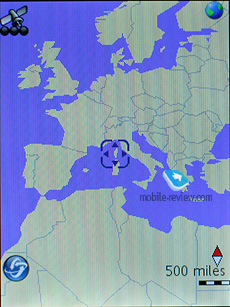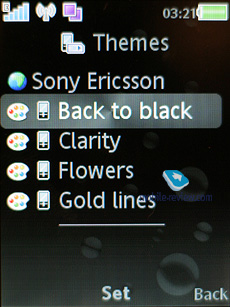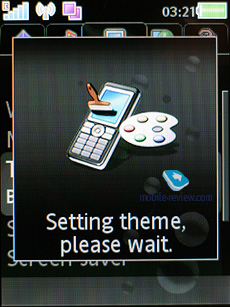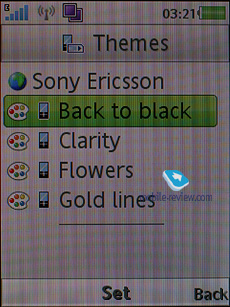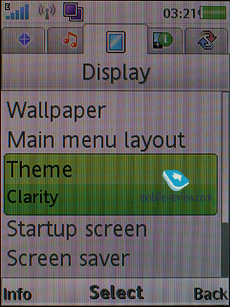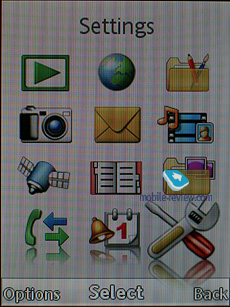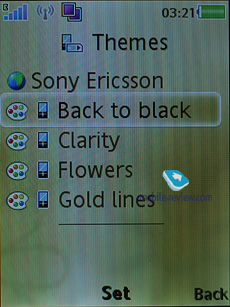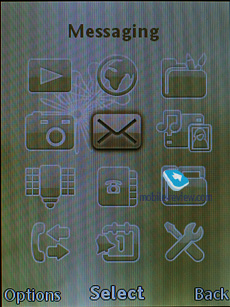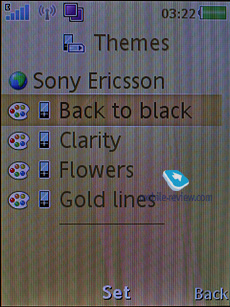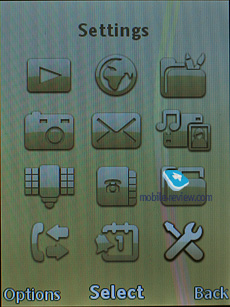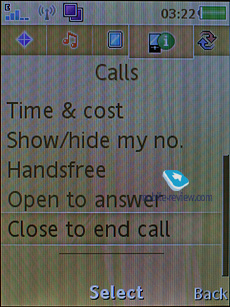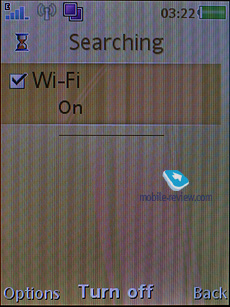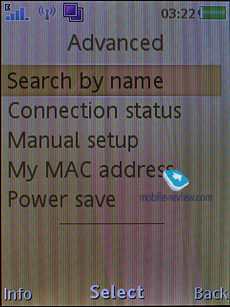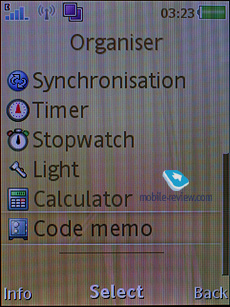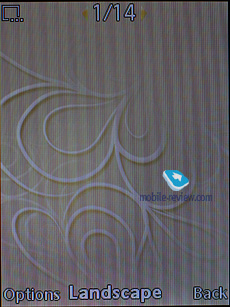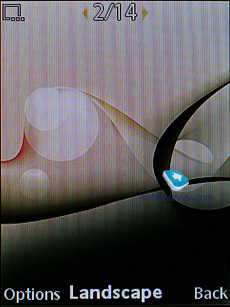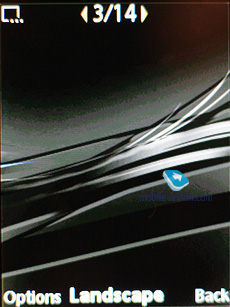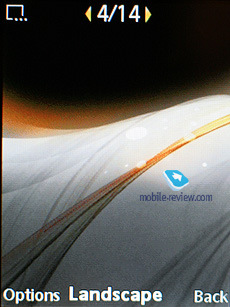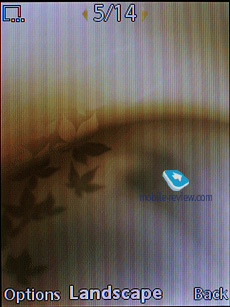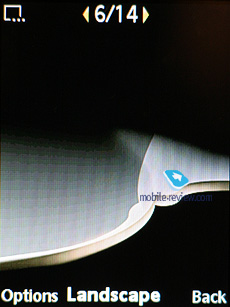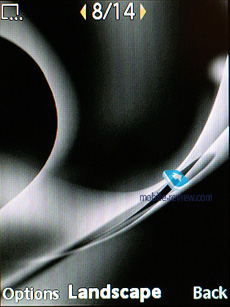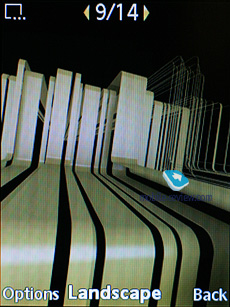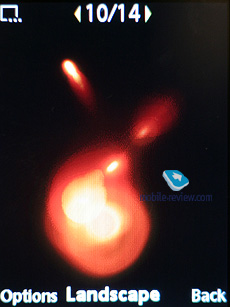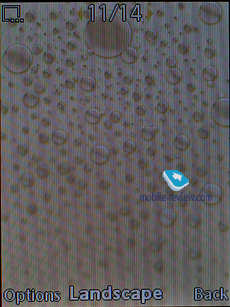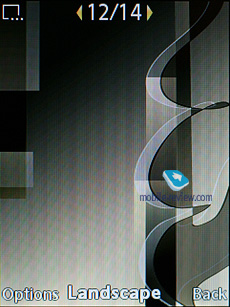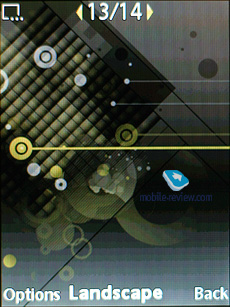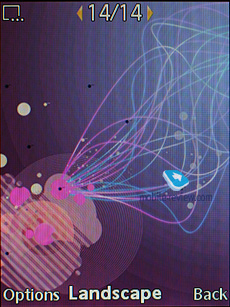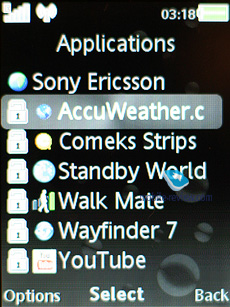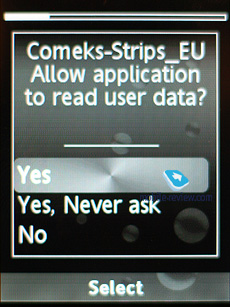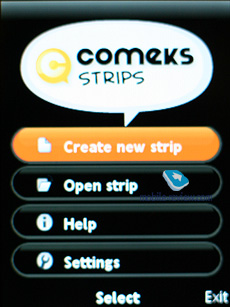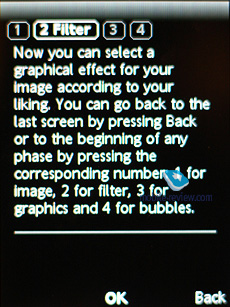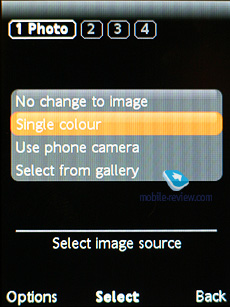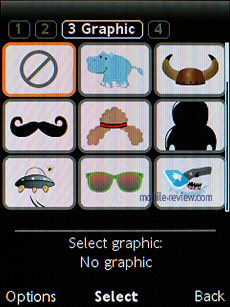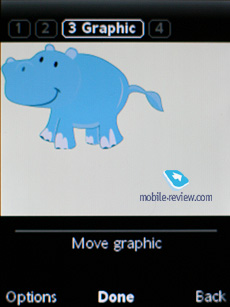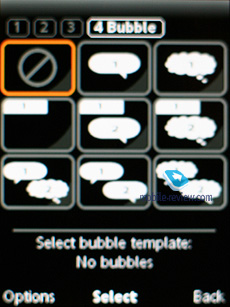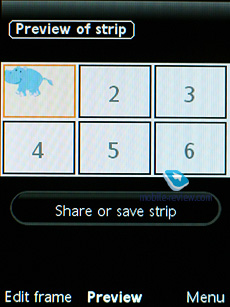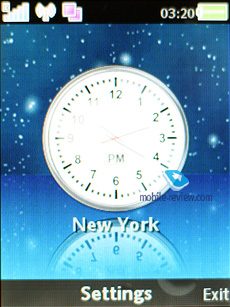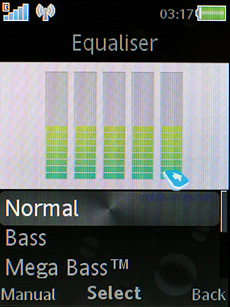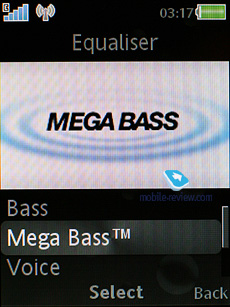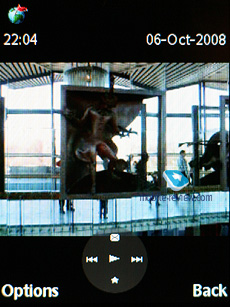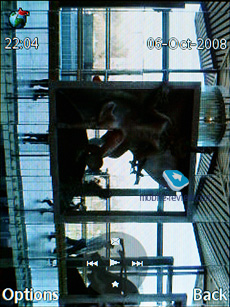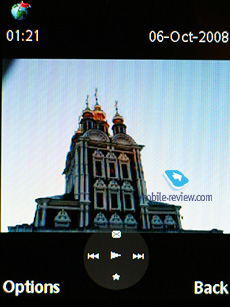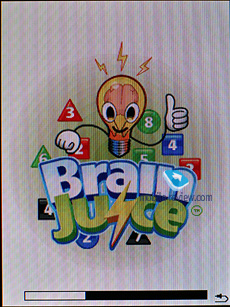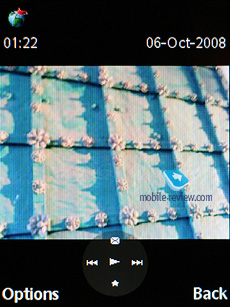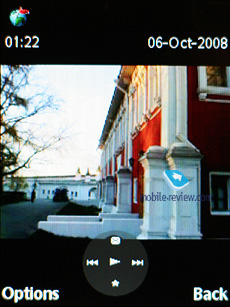|
|
Review of GSM/UMTS-handset Sony Ericsson G705
Live photos of Sony Ericsson G705
Table of contents:
- Positioning
- Design, Size, Controls
- Display
- Keypad
- Battery
- Memory, memory cards
- Connectivity
- Perforamance
- Camera
- GPS-navigation
- Preinstalled applications, themes, games
- Capuchin Project
- Impressions
Sales package:
- Handset
- 930 mAh Li-Ion battery
- Charger
- 1 Gb M2 memory card
- Software CD
- USB data cable
- User Guide
- Wired stereo-headset (HPM-62)
Positioning
The G705 is in fact a replica of the Sony Ericsson C905 – while the latter is the company’s imaging-heavy flagship, this one is geared towards the mass-market end of the fashion-savvy segment. It goes without saying that its attribution to Internet-centric phones (which the entire G-series is known for) is very loose and serves as all another example of how Sony Ericsson find themselves bewildered by their own classification scheme. It turns out that the Walkman-branded offerings represent the “true” style-savvy end of their portfolio, whereas all other handsets are in a different fashion league. Very vague positioning, to say the least, and furthermore, the G705 looks more like a no-frills mid-range fashion-conscious slider, rather than anything else.
While in theory the G705 rivals a wealth of Samsung-branded phones, in practice they are totally different in terms of look-and-feel. I can’t say that someone who has picked the G705 would seriously consider some handset from Samsung’s portfolio, and vice versa. In fact, these two worlds are so far apart, that they are very unlikely to meet at all, so it’d be pointless to ponder over whose feature pack is superior – in this particular case, it’s more about how the user feels about these phones, whether he finds their design appealing or not. Generally speaking, it’s just like when someone who is after a smartphone, such as the Nokia E66, will never even cast a glance at the G705, primarily due to its completely different abilities and aesthetics. That’s why the G705 stands all alone on the market, as it’s often the case with Sony Ericsson’s offerings.
Another thing of note is that the G705 has a music-minded sibling in Sony Ericsson’s portfolio. The W705 comes with a different and, to be frank, better-looking design, enhanced music player (in the way of software, rather than audio quality), bigger memory card in the box and a semi-decent pair of headphones. But more importantly, it’s set to arrive only a couple of months later and at the same price point – in other words, in order to keep the G705 in play, Sony Ericsson will have to send its price through the floor already at the end of Q1 2009. All in all, it’s a very uncharacteristic move for this particular vendor and goes to show that the W705 is so much more important than its G-branded counterpart. Although another possibility is that they might decide that the W705 can’t retail for so little and will bump its price tag; in this case the G705 won’t see a 10-15 percent price drop in several months’ time.
Sony Ericsson W705:
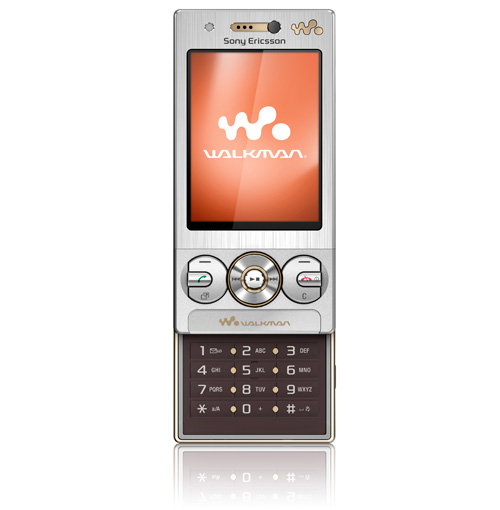
Sony Ericsson G705:
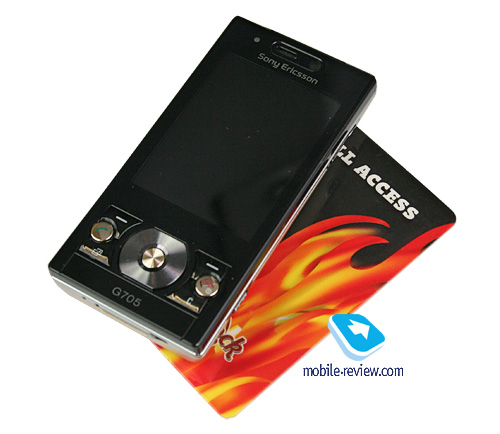
Back to the table of contents >>>
Design, Size, Controls
The G705 comes in two colors – Silky Gold or Majestic Black. Regardless of what option you pick, the phone’s front fascia will be black and glossy (thus, prone to smudges, yet quite good-looking), but the battery cover’s color will vary. Speaking of which, it hinges on a single latch and therefore feels on the looser side. And it wasn’t just our unit – we played around with some other G705s and unfortunately they all had this problem. Another glitch in the phone’s design is that its runners leave discernible traces on the inside of the top half. As far as the materials and build quality go, let us say that the G705 is a generic Sony Ericsson branded solution, although its materials definitely have dropped in quality over the years.
Video. G705’s design, menu and user interface (wmv, 48,9 mb) >>>
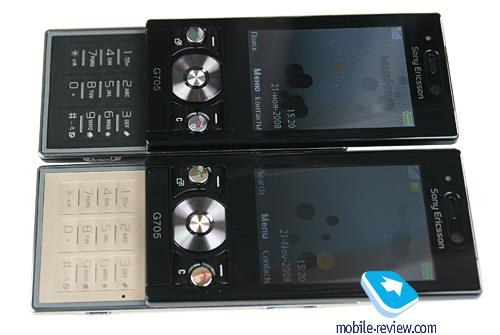
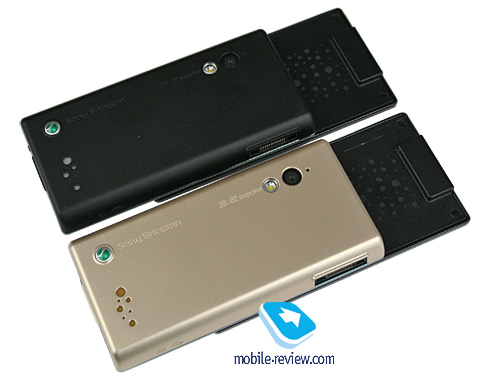
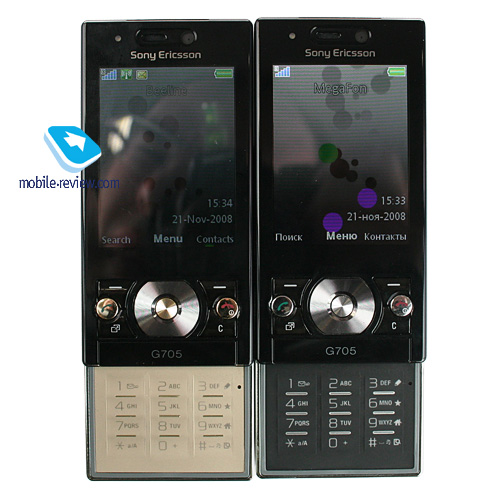
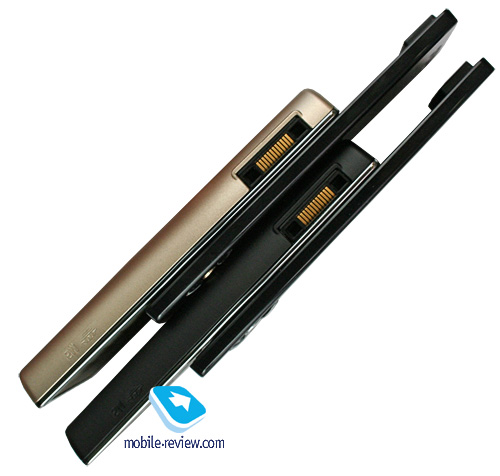
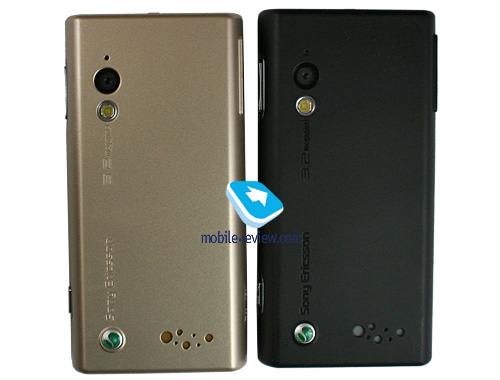
On the left there is the interface connector, while on the opposite side you will find the volume rocker and camera button. Housed on the top end is the music key; around the back of the G705 are the 3.2 Mpix camera lens and LED flash.

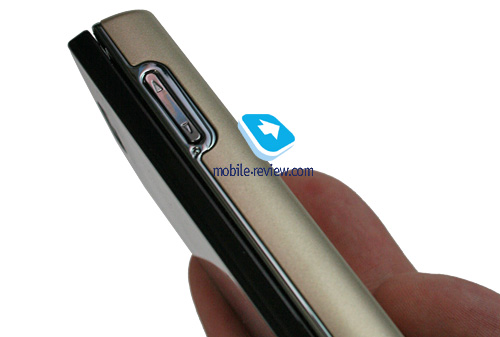
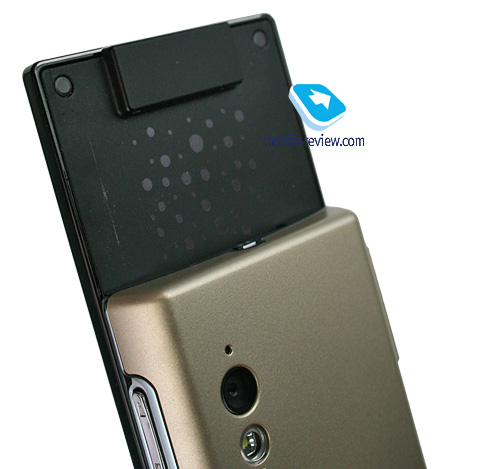
At 95x47x14.3 mm and 98 grams, the G705 is a typical mid-range slider, reasonably palm- and pocket-friendly; other than that, there is not much we can say about it.
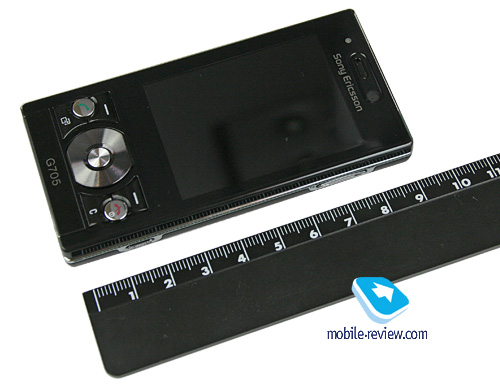

Topping the display is the forward-facing video camera and ambient light sensor.

Back to the table of contents >>>
Display
The G705 utilizes a 240x320 pixel TFT display (2.4 inches from corner to corner, 37x49mm) that shows up to 262K colors. Indoors the picture looks smooth, bright and crisp. In fact, as far as color reproduction goes, this is one of the market's finest units. The G705's screen can accommodate up to 9 text and 4 service lines with some modes allowing for even more information. It does well in the sun, but it gets somewhat washed out.
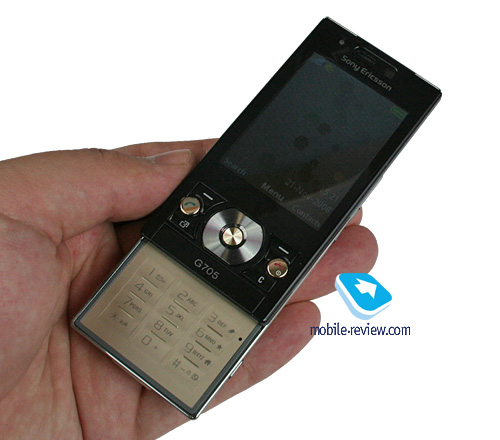
Unlike the C905’s mineral glass, the G705 utilizes a plain piece of plastic as the display cover. While it doesn’t affect its picture quality in any way, this material is more prone to scratching.
The bundled motion sensor allows the G705 to rotate the screen automatically, be it in the web-browser or image gallery.
Back to the table of contents >>>
Keypad
The navigation cluster is relatively easy to use, featuring plasticky mid-sized buttons; the navi pad was a breeze to handle as well, all thanks to its textured surface. On the downside, though, the numberpad isn’t just as good on the G705 – it’s housed on a soft rubber slab, and people with big hands are very likely to tap two keys instead of one at a time. Further complicating things is its backlight that doesn’t seem evenly distributed across the keypad’s real estate – the right side gets substantially more light (by the way, that’s where all browser-related shortcuts are found). It’s hard to say anything about this keypad’s durability – we'll have to wait al least half a year after its release to judge this parameter. However, as it stands today, the G705’s numeric keys seem somewhat feeble.

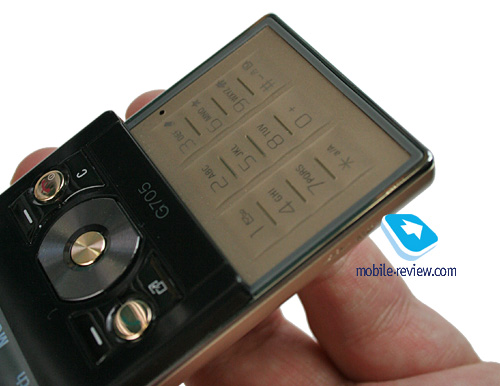


Back to the table of contents >>>
Battery
The G705 makes use of a 950 mAh Li-Pol battery (BST-38). As the manufacturer claims, it can keep the handset up and running up to 400 hours in standby and provide up to 10 hours of talk time.
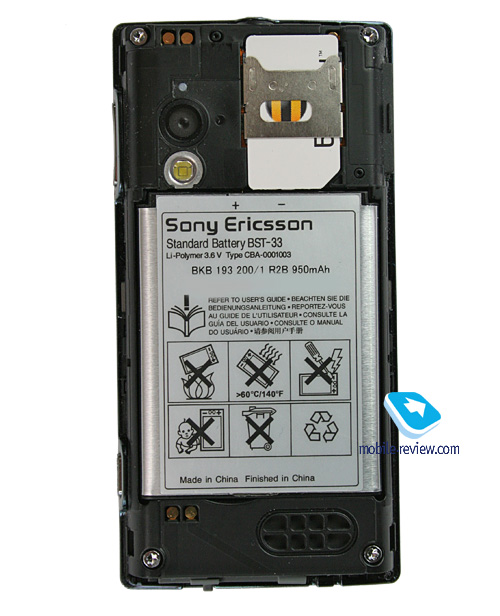
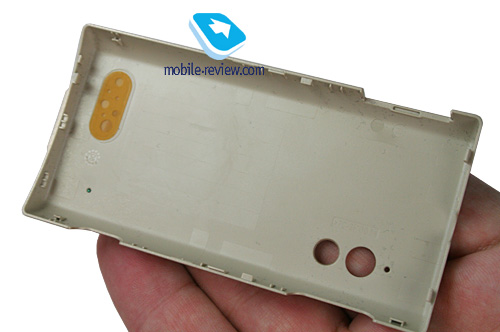
In Moscow the G705 lasted around 2,5-3 days with average use - up to one hour of calls, around 30 minutes of games, 20 minutes of browsing, and several hours of music. In Europe its battery performance will get at least 1,5 times better all thanks to superior coverage. We squeezed around 18.5 hours of music out of the G705. It takes the phone around 2 hours to charge from empty to full (1.5 hours to charge up to 80 percent).
WiFi time (non-stop file downloads) - 2.5 hours.
Navigation time (via WayFinder application) - around 3 hours.
If you turn Push Mail on and opt not to use the phone's navigation department at all, the G705 will last 6 to 9 hours. All in all, it's typical A200-based solution with slightly longer battery times in certain modes (navigation, WiFi).
Back to the table of contents >>>
Memory, memory cards
The G705 comes with around 160 Mb of user-manageable memory, the sales package also includes a 1 Gb memory card (M2), and you can always hot swap them. The top size of your memory card this phone can handle is 32 Gb (when more capable cards come along, it will deal with them as well).
Connectivity
USB
On USB-connection you are forced to pick connection type - specifically whether you will be accessing data stored on the memory card to just keep managing the phone or activate Print mode. Also there is Media Transfer (MTP mode for accessing, say, Windows Media Player). For the first mode we mentioned above the handset goes off and you gain access to the contents of both the memory card and the phone internal memory. Despite the maker claiming it to be USB 2.0, data transfer speed doesn't exceed 500 Kb/s. If you just want your G705 to turn into a modem, then pick the second option, when you will have a chance to play around with various USB settings for going online.
Bluetooth
The handset comes with EDR-enabled Bluetooth 2.0, the menu enables you to turn on enhanced power saving mode. There is also A2DP support, which allows employing wireless headsets with the G705. Its data transfer speed tops out at 100 Kb/s. The list of supported profiles:
- A2DP
- Basic Imaging Profile
- Basic Printing Profile
- Dial-Up Networking Profile
- File Transfer Profile
- Generic Access Profile
- Generic Object Exchange Profile
- Handsfree Profile
- Headset Profile
- HID
- JSR-82 Java API
- Object Push Profile
- Personal Area Network Profile
- Serial Port Profile
- Service Discovery Application Profile
- Synchronization Profile
- SyncML OBEX binding
WiFi
The G705 is the second phone running on A200 platform to support WiFi wireless connectivity (with DLNA certificate, 802.11 b/g). Luckily, it's not a paired-down option here, as the phone allows you to tap into active networks (passworded or not) or find new ones (by SSID). It also supports all input languages, which is pretty important for non-English speaking regions. On top of that, the G705 offers a list with your favorite networks which it will connect to automatically. You can opt to enable Power Saving mode, when the phone will cut all active connections if they are out of use.
Our main niggle with the G705's WiFi, however, is that while the phone offers a wealth of options, it won't last long - only 3 hours or so; and in case you prefer to have a WiFi connection in the background it will affect the battery life big time as well. Basically, it seems as if they haven't optimized power consumption for this option yet. Plus since there are no VoIP applications integrated with the phone's contact list, you won't be able to enjoy full-fledged SIP-telephony. So, all things considered, the G705's WiFi connectivity pales in comparison to that found in S60-based solutions mainly because of these two factors.
Another we need to mention is that the G705 rebooted a couple of times without any explanation when we were surfing the Web via WiFi (around three times in six hours, actually).
Back to the table of contents >>>
Perforamance
The C905's JP-8.4 update has severely affected its performance in our Java tests - in fact, its results have nearly halved in JB1 and JB2 tests compared to other solutions. In the G705, however, everything has reverted back to normal, the phone is seems well-tuned.
The user interface is very responsive and speedy - we didn't experience any freeze-ups or hiccups in this department. At the same time, our JB 3D tests showed that the G705 fares much better than the competition, which is all another proof of how context-dependent these synthetic tests are. As far as JAR files go they can be of any size, while HEAP are limited to 1.5 Mb.
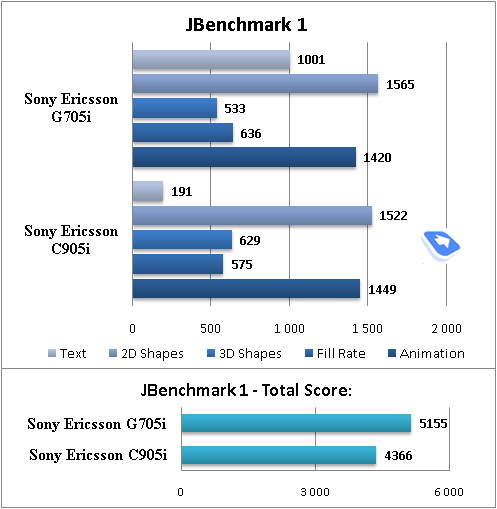
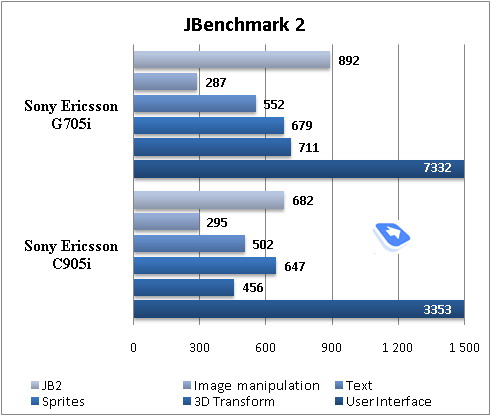
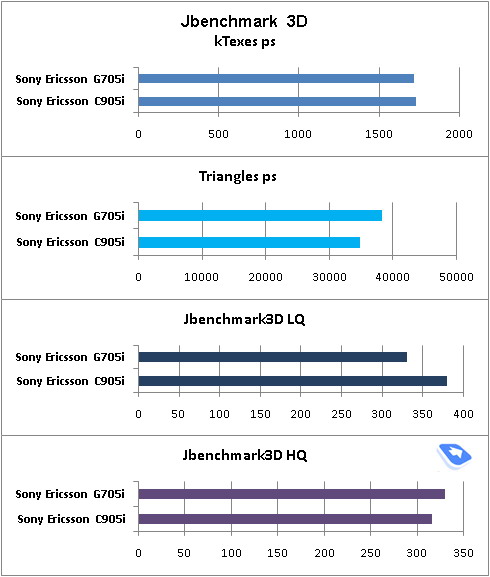
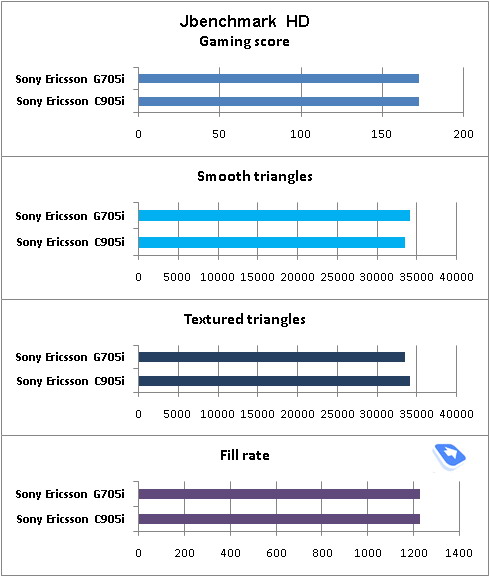
Back to the table of contents >>>
Camera
The device is equipped with a 3.2 MP camera with a CMOS matrix without auto-focus. The device supports three possible resolutions - – 2048x1536, 1632x1224, 1280x960, 640x480 pixels. Two types of data compression (Normal and Fine) are at your disposal. The majority of the sample photos are in the Fine quality. The camera’s interface is laid out vertically, which is due to the handset’s form-factor.
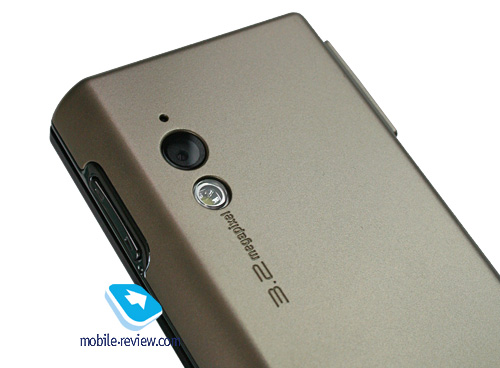
The camera settings look the following way:
- Shutter sound. You can choose one of the three shutter sounds, but will not be able to turn the sound off.
- White balance. A possibility to choose between an auto-mode, Incandescent, Fluorescent, Daylight.
- Effects. Several effects may be applied to the photos. These are Negative, Solarize, Sepia, Black & White.
- Timer is activated for a certain time period for self shooting.
- Night mode is for shooting in the dark. Noises raise on a photo, exposure time gets increased (you shouldn't move the device in order not to get a blurry photo).
- Shooting mode. Normal mode that takes ordinary photos. Multishot-mode (Burst 4) allows taking four photos in a series. Landscape is a very interesting mode that allows taking rather fetching photos; the market hasn’t seen anything similar to date yet. The last mode is taking photos with frames, photo resolution is decreased automatically.
The screen serves as a viewfinder while in the shooting mode. The picture moves very smoothly, details don’t get dropped out. Numeric keys help in switching between various functions and shooting parameters quickly that significantly speeds up.
The W760i’s GPS receiver has also brought about a new feature to the camera menu, specifically “Add Position”, in other words, tagging your images with current coordinates (you can disable it in the camera settings, though).
 |
 |
| (+) enlarge, 2048x1536, JPEG |
(+) enlarge, 2048x1536, JPEG |
 |
 |
| (+) enlarge, 2048x1536, JPEG |
(+) enlarge, 2048x1536, JPEG |
 |
 |
| (+) enlarge, 2048x1536, JPEG |
(+) enlarge, 2048x1536, JPEG |
 |
 |
| (+) enlarge, 2048x1536, JPEG |
(+) enlarge, 2048x1536, JPEG |
 |
 |
| (+) enlarge, 2048x1536, JPEG |
(+) enlarge, 2048x1536, JPEG |
 |
 |
| (+) enlarge, 2048x1536, JPEG |
(+) enlarge, 2048x1536, JPEG |
 |
 |
| (+) enlarge, 2048x1536, JPEG |
(+) enlarge, 2048x1536, JPEG |
 |
 |
| (+) enlarge, 2048x1536, JPEG |
(+) enlarge, 2048x1536, JPEG |
 |
 |
| (+) enlarge, 2048x1536, JPEG |
(+) enlarge, 2048x1536, JPEG |
 |
 |
| (+) enlarge, 2048x1536, JPEG |
(+) enlarge, 2048x1536, JPEG |
 |
 |
| (+) enlarge, 2048x1536, JPEG |
(+) enlarge, 2048x1536, JPEG |
 |
 |
| (+) enlarge, 2048x1536, JPEG |
(+) enlarge, 2048x1536, JPEG |
 |
 |
| (+) enlarge, 2048x1536, JPEG |
(+) enlarge, 2048x1536, JPEG |
Video
Video may be recorded in the 320x240 pixel resolution or 176x144 (3GP). Clip duration may be limited (up to 10 seconds) or unlimited. The G705’s clips are pretty average quality-wise, and as always, we’d like to have VGA resolution for videos. Alas, there is no such option.
Video sample (mp4, 689 kb) >>>
Back to the table of contents >>>
GPS-navigation
If we mark the Z750i as the first generation of Sony Ericsson's GPS-enabled solutions, then it's safe to say that the G705 and C905 represent the second generation primarily in terms of software. Sony Ericsson is banking on free Google Maps (version 2 in particular, with Cell ID functionality that allows getting a GPS fix on your location without having a real GPS-receiver onboard). This application can uploaded onto any phone, meaning that it is not all that unique; on the other hand Sony Ericsson has integrated this application right into the main menu and tweaked it a little bit here and there. New releases of these maps will be available both as separate applications and with firmware updates for the phone.
The main menu features "Location Services" item which comprises a couple of sub-menus with Google Maps sitting on top of the list. The presence of this service actually brings both positives and negatives - while it packs detailed maps of a multitude of cities, as well as the ability to update them on a regular basis, view some satellite photos and browse POI info, it has no local maps saved on your handset. This means that should you find yourself abroad, you will need to get a SIM-card from a local carrier, or go broke trying to pay all your traffic bills, or, the least acceptable option, dismiss the G705's navigation capabilities. To give you an idea how traffic-hungry this application is, let me show you an example: one session normally consumes 500-800 Kb of information and this includes only tracking a place on the map and calculating a route. In this sense Nokia Maps is much more preferable, for it allows you to store maps on your device and download new maps with your PC.
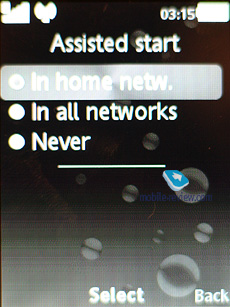
There is no point in examining Google Maps in this write-up - the application is very familiar to many and can be installed on just about any phone. Its main features include route calculation, location tracking (any language), POI data base. Maps can be scaled as well.
The way it is integrated into the G705 is going to surprise you with how basic it actually is. Your whereabouts are marked with a token on the map, so you can save your current location, throw it into Favorites, and calculate a route (which can't be saved, as you can only save some locations, and that's about it, however plotting a route between two points on the map is very easy).
Once launched, the application can be minimized, so you will find a satellite icon on the G705's display. The device comes with a 12-chanel receiver, kicking in only outdoors; cold start time - 4-5 minutes. The phone features a log of coordinates, so any location can be viewed later, which can make for offline browsing of your routes. But to do this you will need to synchronize the G705 to a notebook and with its Internet connection check out maps. And let's be honest, this is not very convenient.
There is a window offering you the number of currently available satellites and your speed. There windows are of no real use, though.
The G705 will stay up and running for around 3-3.5 hours when you use it solely for navigation purposes.
The Navigation entry leads to Wayfinder Navigator - application that allows for turn by turn voice-enhanced navigation. Unfortunately, the phone ships with a three-month trial version; once it expires, you will need to purchase a one-year license. Maps are saved on the phone's available storage, which allows it to avoid the failings of Google Maps and its insane traffic consumption. On the other hand, the necessity to purchase navigation software is a questionable move on Sony Ericcson's part - Nokia with its free version of Nokia Maps is definitely ahead on some fronts.

Back to the table of contents >>>
Preinstalled applications, themes, games
We won't review the G705's standard feature pack, for it comprises all the goodies of the A200, which were given an in-depth close-up in a dedicated article. So here we will be focusing on the phone's unique abilities and features.
Unlike the first A200-powered handsets, the G705 fully enjoys various animations that kick in when some window pops up etc. While it is nothing out of the ordinary, it adds a lot of points to the phone's visual appeal. All in all, another nice feat going for the G705.
The phone comes preinstalled with 4 different themes, all of them involving flash animation to some extent, and changing the looks of the main menu to a circle-shaped appearance or the matrix we are all used to. There are several menu layouts available: grid, rotating and icon.
The G705 ships with two games: Super Breakout, Brain Juice.

The phone features a handful of default applications, including AccuWeather (allows getting up-to-the-minute weather forecasts) and Comeks Strips (add comics-esque effects to your snaps).

Walk Mate – all this application can do is count all steps you've made during this day/week/month.
YouTube – this application allows accessing the mobile version of YouTube.com. While the quality of clips leaves much to be desired in most cases, the G705 lets you view videos in full-screen mode and even check out the ratings.
As far as multimedia feats are concerned, the G705 is a standard A200 fare - read more about it here.
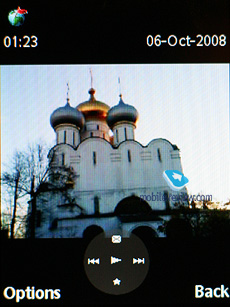
Apart from the music player, the G705 also packs in FM-radio.
Back to the table of contents >>>
Capuchin Project
The G705 is Sony Ericsson's second phone to support JP-8.4 - a new Java platform that ships with all the benefits of previous editions and adds support for Capuchin project on top of that. Effectively, it's an attempt to break away from the restraints of A200 platform, since you can go only this far with Java applications, especially when it comes to graphics. So, the solution Sony Ericsson have come up with is quite elegant - they have enabled developers to throw flash clips into their Java apps, which is a very strong move that can potentially become a good alternative to smartphone functionality, provided that it'll spread beyond this particular phone. The question remains, however, whether Nokia will go on and implement Capuchin project into their handsets. In my opinion, the answer couldn't be more clear-cut - no, otherwise they'd create a threat to their ever-growing sales of S60-based solutions. It seems that at the end of the day Sony Ericsson will be the only phone maker utilizing this technology, as it's quite unlikely that Samsung will want to take part in it.
So far we have managed to dig out only four applications showcasing what project Capuchin can do. One of them is the all-time classics - Hello World prompt; the two other ones feature an animated clock (that won't start up on the G705, however) and task list. And the last, but not the least, boasts a flash-based interface for the pedometer application. It's not much, by any stretch of imagination, but this platform has got some potential and will allow for a wealth of capable and well-designed applications down the road. It's quite another matter though that Sony Ericsson's programmers will be the ones in charge of it, but seeing how feeble their efforts have been on this field (with phone themes in particular - the flash framework is still pretty weak; and there is not a slew of themes out there either) there is no reason to be overly optimistic about the future of Capuchin-based software. At the same time, third-party developers won't have nearly enough motivation to write these Java apps exclusively for Sony Ericsson branded phones or tweak already existing ones with some flash-based adornments.
We'll see how it will work out for Sony Ericsson very soon - so far, this technology appears to be quite promising, but they'll need to back it up with some real solutions too.
Back to the table of contents >>>
Impressions
Even though the G705 comes equipped with only one loudspeaker, it's pretty loud and won't let you miss a call in pretty much any environment. However, considering the phone size, you'd expect it to rock somewhat louder; unfortunately, it's not the case here. As far as reception quality goes, the Sony Ericsson G705 was an okay performer without any significant letdowns or strengths. The vibro alert is a bit above average strength-wise - you'll feel it even though clothes, make no mistake about that.
Retailing for 300 Euro, the G705 aims at a pretty narrow niche – while it sports a likable and offbeat design, WiFi connectivity and GPS, its quirky positioning is what holds it back. It’s not the best choice for heavy web users, although it’s a decent solution for calls without too many extra feats. Those who are after more feature-rich offerings, will be content with the Nokia E66, but this phone is in a league of its own, even though it’s not much more expensive. Furthermore, with the arrival of the W705, the Sony Ericsson G705 won’t stand a chance. It’s not the best buy out there, nor does it deserve any sort of special credit.
Related links
Back to the table of contents >>>
Eldar Murtazin (eldar@mobile-review.com)
Translated by Oleg Kononosov (oleg.kononosov@mobile-review.com)
Published — 17 December 2008
Have something to add?! Write us... eldar@mobile-review.com
|
News:
[ 31-07 16:21 ]Sir Jony Ive: Apple Isn't In It For The Money
[ 31-07 13:34 ]Video: Nokia Designer Interviews
[ 31-07 13:10 ]RIM To Layoff 3,000 More Employees
[ 30-07 20:59 ]Video: iPhone 5 Housing Shown Off
[ 30-07 19:12 ]Android Fortunes Decline In U.S.
[ 25-07 16:18 ]Why Apple Is Suing Samsung?
[ 25-07 15:53 ]A Few Choice Quotes About Apple ... By Samsung
[ 23-07 20:25 ]Russian iOS Hacker Calls It A Day
[ 23-07 17:40 ]Video: It's Still Not Out, But Galaxy Note 10.1 Gets An Ad
[ 19-07 19:10 ]Another Loss For Nokia: $1 Billion Down In Q2
[ 19-07 17:22 ]British Judge Orders Apple To Run Ads Saying Samsung Did Not Copy Them
[ 19-07 16:57 ]iPhone 5 To Feature Nano-SIM Cards
[ 18-07 14:20 ]What The iPad Could Have Looked Like ...
[ 18-07 13:25 ]App Store Hack Is Still Going Strong Despite Apple's Best Efforts
[ 13-07 12:34 ]Infographic: The (Hypothetical) Sale Of RIM
[ 13-07 11:10 ]Video: iPhone Hacker Makes In-App Purchases Free
[ 12-07 19:50 ]iPhone 5 Images Leak Again
[ 12-07 17:51 ]Android Takes 50%+ Of U.S. And Europe
[ 11-07 16:02 ]Apple Involved In 60% Of Patent Suits
[ 11-07 13:14 ]Video: Kindle Fire Gets A Jelly Bean
Subscribe
|



